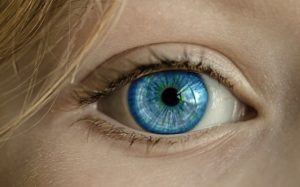There are several different types of eye problems that can affect your eyesight. They usually hide in plain sight – damaging the delicate visual system before showing any symptoms and that’s why regular eye exams at London Ophthalmology Centre are very important. Fortunately, most common vision problems can be treated with proper care and precision.
The following are some of the most common eye problems and treatments.
1. Myopia (Nearsightedness)
Medically known as myopia, nearsightedness simply refers to vision that isn’t good at a distance, but very good at a close range. Generally, this problem occurs when the eyeball is quite long (that is, from front to back). If you have this vision problem, it can be diagnosed during your routine eye checkups, and some of the possible treatments include photorefractive keratotomy (PRK), radial keratotomy (RK), LASIK, acrylic corneal implants, contacts, and eyeglasses.

2. Astigmatism
Astigmatism is an irregular or uneven curvature of the lens or cornea that leads to distorted or blurred vision. Eye fatigue, headaches, eyestrain from squinting and squint are some other symptoms of this eye problem. In reality, most individuals are more likely to have some degree of this condition that is believed to be hereditary and is usually present at birth. In some cases, treatment may not be necessary, but can be certainly beneficial. However, when it’s moderate or severe, it can be treated with LASIK surgery or corrective eye-wear.
3. Presbyopia (Aging Eyes)
Medically referred to as presbyopia, aging eyes is a vision problem in which the eye’s lens losses its flexibility gradually, making it difficult to clearly focus on close objects like printed words, but on the other hand, distance vision isn’t affected. Unfortunately, this eye problem is an inevitable part of aging and can’t be prevented by diet, visual or lifestyle habits. It’s, however, treatable with many types of corrective lenses, such as single-vision reading glasses, monovision therapy, multi-focal contact lenses, progressives, and even bifocals and trifocals.
4. Hyperopia (Farsightedness)
 Also known as hyperopia, farsightedness is just the opposite of myopia (nearsightedness) in which your vision is very good at a distance, but very poor at close range. It’s actually one of the common eye problems that occur when the eyeball is relatively shorter than normal or when the cornea/lens has too little curvature. Mildly farsighted people may not require corrective treatment, but if you’re severely or moderately hyperopic, there are many treatment options such as eyeglasses, photo-refractive keratectomy (PRK), LASIK, and contacts just to mention a few. After diagnosis, your optician will recommend the best treatment options for you.
Also known as hyperopia, farsightedness is just the opposite of myopia (nearsightedness) in which your vision is very good at a distance, but very poor at close range. It’s actually one of the common eye problems that occur when the eyeball is relatively shorter than normal or when the cornea/lens has too little curvature. Mildly farsighted people may not require corrective treatment, but if you’re severely or moderately hyperopic, there are many treatment options such as eyeglasses, photo-refractive keratectomy (PRK), LASIK, and contacts just to mention a few. After diagnosis, your optician will recommend the best treatment options for you.
In addition to that, floaters, dry eyes, tearing, amblyopia, cataracts, color blindness, and conjunctivitis are some other common eye problems that could possibly affect your vision.…

